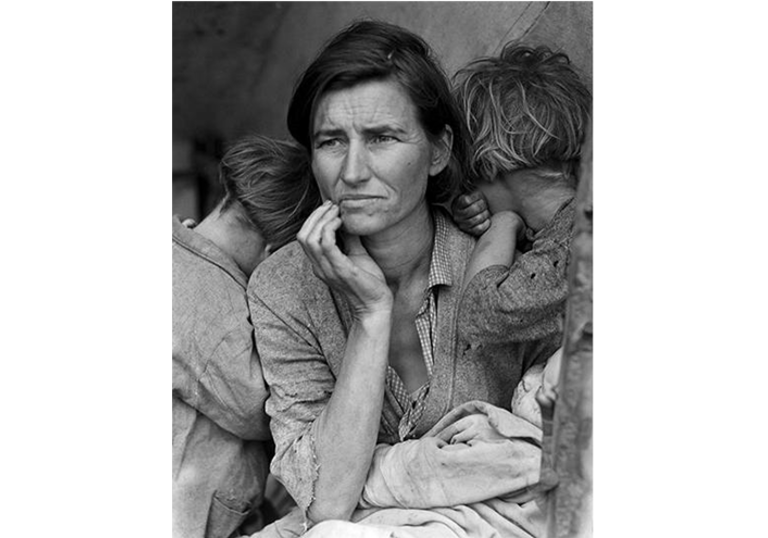Dorothea Lange’s single most iconic image of the Migrant Mother is one out of seven negatives she made on a trip to a migratory pea pickers’ camp in Nipomo, California in spring 1936. Lange shot the sequence as she was on her way back from a month-long trip photographing in central California on commission from the government, and nearly missed the opportunity. Tired and eager to get home, she had initially driven past a signpost to the camp until something compelled her to turn around.
She approached the family group from a distance, gradually moving in closer
In the camp, she encountered Florence Owens Thompson and her children, who were among 2,500 pea pickers out of work and living in desperate conditions, in their lean-to tent. Lange set up her bulky 4×5 camera. She approached the family group from a distance, gradually moving in closer to produce the close-up shot she wanted.
Contrary to Lange’s usual engagement with her subjects, the interaction with Thompson was brief, yet the photographic legacy of this poignant moment has continued to affect us up until the present day. The Migrant Mother has since become a symbol of American endurance in the face of unemployment, hunger and homelessness.
Photo: Dorothea Lange, Migrant Mother, Nipomo, California, 1936 ©The Dorothea Lange Collection, the Oakland Museum of California


